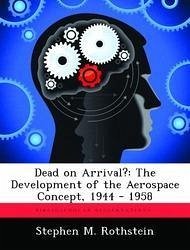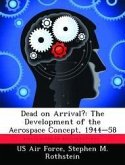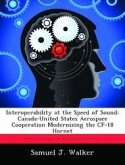First impressions are lasting impressions. In late-1958, Air Force Chief of Staff, General Thomas D. White first evoked the term "aerospace" to describe to the nation how America's airmen perceived their operational environment. "Air and Space are not two separate media to be divided by a line and to be readily separated into two distinct categories; they are in truth a single indivisible field of operations." Unfortunately, also by the end of 1958, organizational architecture, national legislation, and national policy were in place to indicate that an alternative paradigm would take precedence over the Air Force's. This study chronologically traces the historical development of the aerospace concept, from its initial inception in 1944 as it was embodied in the far-reaching vision of General "Hap" Arnold, until its public appearance in 1958. The study also uncovers reasons why airmen came to see their primary area of responsibility differently than the rest of the nation, and why their aerospace concept failed to win bureaucratic support. By tracing the aerospace concept's technological and intellectual development against a contextual backdrop of geopolitics, national security strategy, national space policy, interservice competition, and internal tensions within the Air Force, the paper offers historical "lessons learned" for today's planners seeking to move the Air Force toward an Aerospace Force.
Hinweis: Dieser Artikel kann nur an eine deutsche Lieferadresse ausgeliefert werden.
Hinweis: Dieser Artikel kann nur an eine deutsche Lieferadresse ausgeliefert werden.








